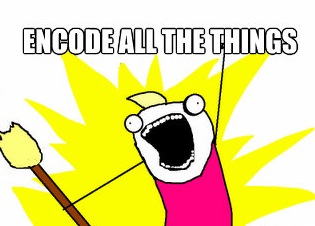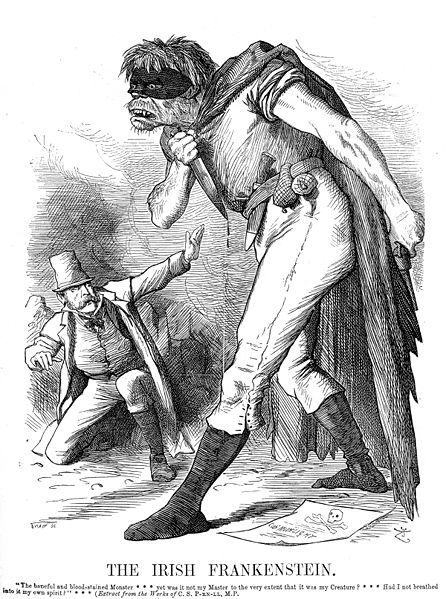
Encode all the things... or not. Remixed from image by Allie Brosh of Hyperbole (hyperboleandahalf.blogspot.com).
Update 4/24/2012: Oh, neat!: this post got the DH Now Editor’s Choice on Tuesday, April 24th, 2012.
Team MARKUP evolved as a group project in Neil Fraistat’s Technoromanticism graduate seminar (English 738T) during the Spring 2012 term at the University of Maryland; our team was augmented by several students in the sister course taught by Andrew Stauffer at the University of Virginia. The project involved using git and GitHub to manage a collaborative encoding project, practicing TEI and the use of the Oxygen XML editor for markup and validation, and encoding and quality-control checking nearly 100 pages of Mary Shelley’s Frankenstein manuscript for the Shelley-Godwin Archive (each UMD student encoded ten pages, while the UVa students divided a ten-page chunk among themselves).
Team MARKUP is currently writing a group blog post on the process, so I’ll use this post to concentrate on some specifics of the experience and link to the group post when it’s published.
Six takeaways from the Team MARKUP project:
- Affective editing is effective editing? One of my favorite quotations–so beloved that it shapes my professional work and has been reused shamelessly on my Ph.D. exams list, a Society for Textual Scholarship panel abstract, and at least one paper–is Gary Taylor’s reasoning on the meaningfulness of editing:
“How can you love a work, if you don’t know it? How can you know it, if you can’t get near it? How can you get near it, without editors?”*.
Encoding my editorial decisions with TEI pushed me a step closer to the text than my previous non-encoded editorial experience, something I didn’t know was possible. My ten pages happened to be the first pages of the Creature’s monologue; hearing the voice of the Creature by seeing its true creator’s (Mary Shelley’s) handwriting gave me shivers–meaningful shivers accompanied by a greater understanding of important aspects of Shelley’s writing, such as the large editorial impact made by her husband Percy and the differing ways she crossed out or emphasized changes to her draft. Moving between the manuscripts images and the TEI encoding–so similar to my other work as a web designer and developer–also emphasized the differences in the writing process of my generation and the work that went into inscribing, organizing, and editing a book without the aid of a mechanical or digital device. (more…)







